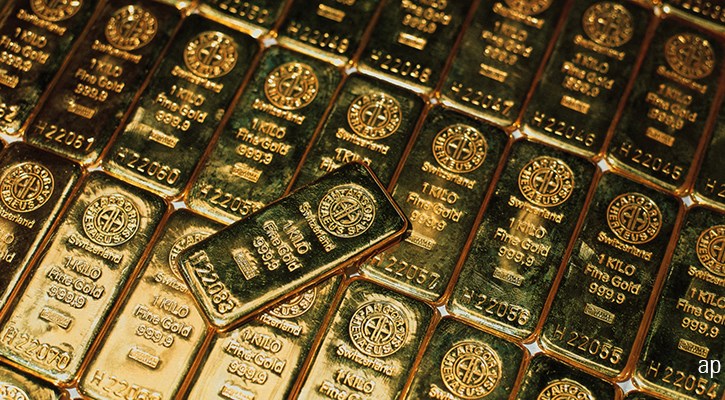Gold prices have been flat year to date after reaching an all-time peak in late 2011, as weaker exchange-traded fund inflows have led to modest declines in gold investment demand. Stronger physical and official sector demand for the yellow metal has helped to pick up most of the slack from weaker ETF demand, however, providing a measure of support for gold prices. While we think gold prices will probably remain strong over the near to intermediate term, we maintain our long-term forecast of $1,200 per ounce as current investment demand looks unsustainable over the long run, in our view. On the equities side, gold miners have continued their free fall in recent quarters, deepening their recent underperformance relative to bullion. We think valuation disconnects relative to bullion, as well as higher dividend payments, could help gold mining equities regain some ground; however, rampant cost inflation and heightened competition for investor inflows by bullion bars and gold-backed ETFs remain key downside risks for gold mining shares.
Physical Demand, Central Bank Purchases Pick Up Slack From Weaker ETF Demand
While gold demand (and prices) steadily rose during the past decade on the back of surging gold investment demand, the elevator ride up has stalled more recently, as gold investment demand decreased for two straight quarters following its local peak in the third quarter of 2011 of 500 tons. Much of the slowdown in gold investment demand can be attributed to weaker net inflows into bullion-backed ETFs since the third quarter of 2011. ETF demand reached a peak in 2009 with 617 tons of gold and has steadily declined in subsequent years. However, continued strength in physical demand for the yellow metal, especially in the form of bullion bars, has helped to pick up the slack from flagging ETF demand and prevent a sharp drop in gold demand.
On the supply side, central banks are continuing to step up their purchases in a big way. The central banks' switch from net sellers to net buyers of gold in recent years has galvanised gold demand and prices by essentially soaking up excess gold supply from the open market. While official sector purchases are currently identified as a component of gold supply, central banks in aggregate haven't been net suppliers of gold since 2009, and we expect official sector purchases to be reclassified as a source of gold demand (not supply) by the World Gold Council, as they should be. Official sector purchases of gold on a net basis contributed 457 tons of demand in 2011, and we project central banks to buy more than 300 tons in 2012 based on first-quarter net purchases of 81 tons. We expect central banks to continue to be a major demand source for bullion over the near to intermediate term.
Gold Heading One Way, Gold Miners Heading Another
Gold miners' share performance as a group has trailed bullion during the past 12 months, a trend that has generally held true over the past several years. However, the severity of the gold miners' underperformance relative to gold has somewhat reversed in recent months, as Morningstar's gold mining coverage list in aggregate is up 9.8% over the past three months compared with a 2.9% gain in gold prices over the same period. We think the disconnect between gold prices and valuations for gold miners, as well as higher dividend payouts from many of the larger gold producers, could help to decelerate the free fall in gold mining equity prices by attracting more investor capital flows into gold mining shares.
Yamana Gold (YAU) has been a notable outlier in our gold mining coverage universe over the past 12 months, as the only gold miner we cover that has outperformed bullion. We believe the firm's speedy delivery of its Mercedes mine from construction to commercial production helped burnish Yamana's credibility with investors, leading to its outperformance. On the flip side, Kinross (K) has been the worst performer in our gold mining coverage, shedding roughly half its value during the past 12 months. The giant $2.9 billion goodwill-impairment charge on its Tasiast project, which Kinross announced in January, is undoubtedly a major driver of the stock's recent underperformance. Management had previously assured investors that it would be able to create value through its expensive acquisition of Red Back Mining (which brought the Tasiast project into Kinross' purview), but the transaction has failed to deliver on management's promise thus far.
Despite the continued weak performance by the gold mining sector in aggregate, we see some light at the end of the tunnel, which could help bridge this performance gap between gold and gold miners. First, gold miners across the board are raising their dividend payouts as cash flows are buoyed by high bullion prices. We think these higher dividends, which are now very competitive relative to the yields of stock market indices in some cases, could help lure some investors back into mining equities.
The second potential catalyst is valuation. As the share performance of the miners continues to lag that of the gold price, the ounces in the ground that are owned by these miners only become cheaper relative to bullion itself. We think investors could start to see that valuation disconnect, which would prove positive for gold mining equities. Some gold mining executives have already acted on this perceived valuation disconnect. Nevertheless, we believe investors could continue to eschew gold mining equities because of the additional layers of operational and geopolitical risk in such investments, compared with just purchasing gold bars or ETFs. As such, we think gold miners that do the best job of limiting production and capital cost inflation and operating in stable mining jurisdictions have the best shot at outperforming the yellow metal.










.jpg)

















